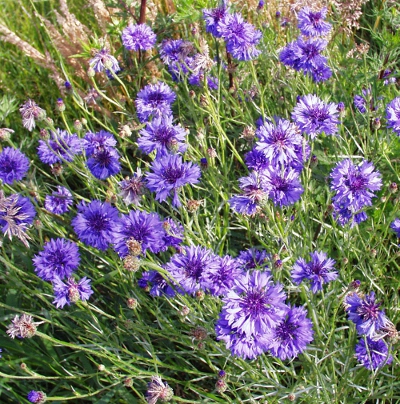Wildflowers |

Cornflowers on field margins
Unlike the grasses, their flowers are usually pollinated by insects, and in contrast to mosses, ferns, horsetails and lycopods real flowers are formed.
The latter are mostly hermaphrodite and often have sepals and petals. The male part consists of stamens, that are divided into a filament and an anther. The female flower organs consist of carpels. They are more or less adnate with each other in any combination. They often form a closed ovary that can be superior, half-inferior or inferior.
In addition to eye-catching wild herbs with large and colorful petals, there are also inconspicuous plants with small, green or brownish and unremarkable flowers, as persicaria, dock or some amaranthaceae. Many plants, such as lots of plantain species, most Fagaceae and even the grasses, that are to be dealt with separately here, secondary returned to wind pollination.
It's not always easy to distinguish lignified and herbaceous plants, because some specimen may be only partially woody, for example at the base. Sometimes lignified and herbaceous species coexist in the same genus. In these cases, they are described in both rubrics, in wildflowers and in woody plants, a category which is still at the planning stage.
The collection of wildflowers that is published here, located in the district of Emsland, is not yet complete. Rather, it is constantly expanded and updated. If necessary, for example in the case of changes in the taxonomy, the websites concerned will be revised.